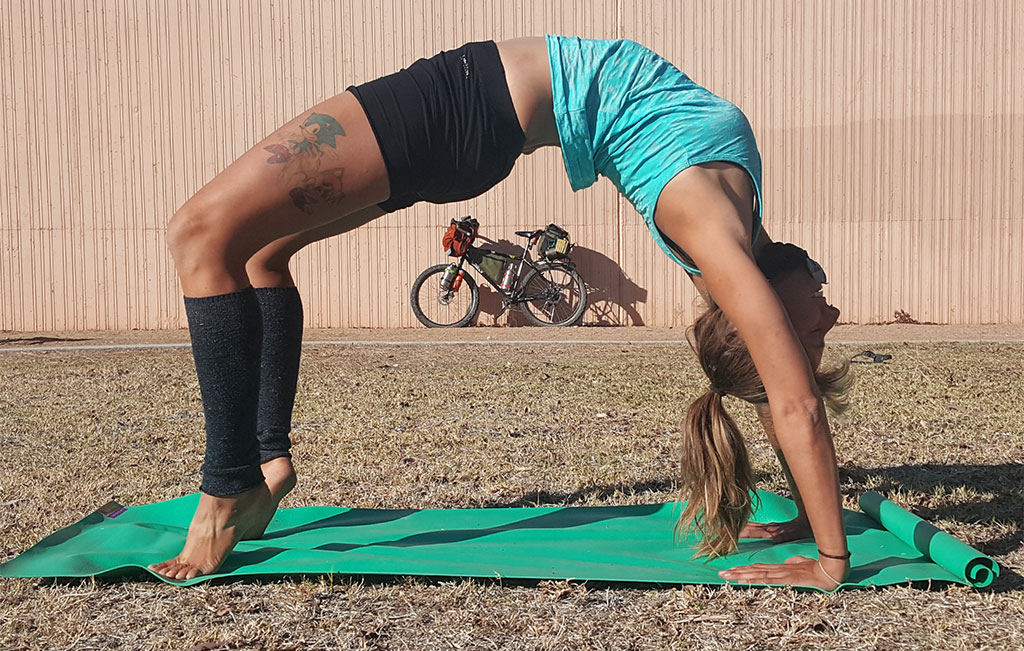
Photo Credit: @princesspeppers_
In the past 10 years, the place where I live, Salt Lake City, has become a more bike-friendly city, with innovative bike lanes and green bikes for rent downtown. This is part of a national trend. The trend toward bicycling as a transportation mode benefits not only the health of individual cyclists, but the community as a whole.
According to an article in Transport Review:
“ … Cycling is probably the most sustainable urban transport mode, feasible not only for short trips but also for medium-distance trips too long to cover by walking (Pucher & Buehler, 2008). Cycling causes virtually no environmental damage, promotes health through physical activity, takes up little space and is economical, both in direct user costs and public infrastructure costs. In short, cycling is environmentally, socially and economically sustainable.”
Like any other form of exercise, there are lots of health benefits to biking—strength, mobility, balance and cardiovascular strength. Not to mention that cycling gets you into the outdoors, whether you’re roaming the streets or exploring rugged terrain.
But physical imbalances can develop as a result of muscle overuse and unnatural posture. Bicycling fires up your quadriceps, hamstrings and outer thighs. This is a great thing, but these muscles need to stretch too. Most bicycles require riders to bend, or even hunch, forward, causing postural imbalances. In order to compensate for these issues, we need to practice movements that do the opposite.
Yoga can help. Of course, there are many, many poses that can help restore balance to tight muscles and bent-over posture—pretty much all of them, really. But still, there are a few poses that specifically address areas where excessive tightening and postural imbalances can occur. Check out these five yoga poses that can help balance a biker’s body.
5 Yoga Poses for Cyclists
- Anjaneyasana (Lunge Pose): Your quadriceps work very hard when you ride a bike. Lunge Poses can help unwind tension in the quads. In general, lunges are also easy on your knees. The revolved versions of Anjaneyasana—both the high and low versions—can help relieve low- and mid-back strain.
- Matsyasana (Fish Pose) on Yoga Blocks: Bending forward over your handlebars while hyperextending your neck in order to look ahead can, over time, strain your back, shoulders and neck. Passively expanding your chest and shoulders in Supported Matsyasana is a great way to balance the bent-forward posture. It also sets you up for a more open Setu Bandha Sarvangasana (Bridge Pose), the next pose on this list.
- Setu Bandha Sarvangasana (Bridge Pose): Bridge Pose moves your body into a more active backbend. Supported Matsyasana creates front-body expansion, but without any back-body strength required. Bridge Pose helps counteract the back-body weakening aspects of sitting and bending forward. The flexed neck position also counteracts the most common cycling head position, which is to be in extension.
- Ardha Padmasana (Half Lotus Pose): People who cycle a lot often develop tight muscles in their outer thighs. Of course, these muscles also become strong, which is a good thing, but when there’s a strength imbalance between the inner and outer thigh muscles, sometimes your knees can suffer. There are, of course, many yoga asanas that address outer hip mobility. I especially like Ardha Padmasana because it stretches one side at a time, and also because when you’re lying on the floor, it’s easier to keep your spine in a healthy position.
- Supta Padangusthasana (Supine Big Toe Pose): Finally, the hamstrings. There are lots of yoga asanas that stretch your hamstrings—standing, seated and supine. Any of them would be appropriate for rebalancing your hamstrings, but I especially like Supta Padangusthasana for the same reason I like Ardha Padmasana. The floor gives you good feedback as to whether you’re keeping your lumbar spine from rounding as you stretch your legs. Also, it gives you the opportunity to zero in on each leg individually.
Always end your yoga session, even a relatively short one like the above, with a 10-minute—or more—Savasana. This gives your body a chance to settle and integrate the benefits of your yoga practice.
If you have any favorite yoga poses for cyclists, we’d love to hear about them.
